How to Read Capacitance Values and Rated Voltage

This article details how to read the capacitance values and rated voltage of capacitors.
E series
Capacitance values are determined along the E series as follows.
The "E" in the E series stands for exponent, and the E12 series is completed by inserting the numbers 0 to 11 (12 numbers) into the "n" of the E12 series.
For Capacitors with an tolerance of ±10[%], using the E12 series values, 100[pF] is 90 to 110[pF], 120[pF] is 108 to 132[pF], and 150[pF] is 135 to 165[pF], so that the tolerance ranges overlap.
For resistors, the E12 series is often used, but for capacitors, the E3 or E6 series is often used.
E3/E6/E12/E24 series
| E3 ±40% $\sqrt[3]{10^n}$ | E6 ±20% $\sqrt[6]{10^n}$ | E12 ±10% $\sqrt[12]{10^n}$ | E24 ±5% $\sqrt[24]{10^n}$ |
|---|---|---|---|
| 1.0 | 1.0 | 1.0 | 1.0 |
| 1.1 | |||
| 1.2 | 1.2 | ||
| 1.3 | |||
| 1.5 | 1.5 | 1.5 | |
| 1.6 | |||
| 1.8 | 1.8 | ||
| 2.0 | |||
| 2.2 | 2.2 | 2.2 | 2.2 |
| 2.4 | |||
| 2.7 | 2.7 | ||
| 3.0 | |||
| 3.3 | 3.3 | 3.3 | |
| 3.6 | |||
| 3.9 | 3.9 | ||
| 4.3 | |||
| 4.7 | 4.7 | 4.7 | 4.7 |
| 5.1 | |||
| 5.6 | 5.6 | ||
| 6.2 | |||
| 6.8 | 6.8 | 6.8 | |
| 7.5 | |||
| 8.2 | 8.2 | ||
| 9.1 |
Digit Numbering
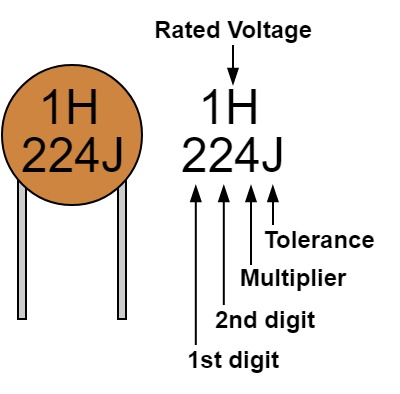
Ceramic capacitors, film capacitors, tantalum capacitors and some chip capacitors are indicated by numbers as follows. In addition to numbers, there are also special markings such as R (decimal point).
Usually, "pF" is used as the standard, but for larger capacitance, "uF" may be used as the standard.
Digit Numbering
| 1st digit | 2nd digit | Multiplier |
|---|---|---|
| 0 | 0 | $10^0$ |
| 1 | 1 | $10^1$ |
| 2 | 2 | $10^2$ |
| 3 | 3 | $10^3$ |
| 4 | 4 | $10^4$ |
| 5 | 5 | $10^5$ |
| 6 | 6 | $10^6$ |
| 7 | 7 | $10^7$ |
| 8 | 8 | $10^8$ |
| 9 | 9 | $10^9$ |
| R(Decimal Point) | R(Decimal Point) | - |
The tolerance of capacitors are marked by alphabets as follows.
Tolerance
| Alphabet | Tolerance |
|---|---|
| C | ±0.25[pF] |
| D | ±0.5[pF] |
| F | ±1[%] |
| G | ±2[%] |
| J | ±5[%] |
| K | ±10[%] |
| M | ±20[%] |
| Z | -20[%], +80[%] |
The rated voltage of the capacitors are marked by alphabets and numbers as follows.
Rated voltage(Alphabet and number)
| Alphabet | 0 | 1 | 2 | 3 |
|---|---|---|---|---|
| A | 1 | 10 | 100 | 1000 |
| B | 1.25 | 12.5 | 125 | 1250 |
| C | 1.6 | 16 | 160 | 1600 |
| D | 2 | 20 | 200 | 2000 |
| E | 2.5 | 25 | 250 | 2500 |
| F | 3.15 | 31.5 | 315 | 3150 |
| G | 4 | 40 | 400 | 4000 |
| H | 5 | 50 | 500 | 5000 |
| J | 6.3 | 63 | 630 | 6300 |
| K | 8 | 80 | 800 | 8000 |
For small size capacitors, only one letter of the alphabet is used, as shown below.
Rated Voltage(Alphabet only)
| Alphabet | 0 |
|---|---|
| j | 6.3 |
| A | 10 |
| C | 16 |
| E | 25 |
| V | 35 |
| H | 50 |
Simplified Capacitor Chart
Simplified Capacitor Chart
| Example | Capacitance Value |
|---|---|
| 106 | 10[uF] |
| 105 | 1[uF] |
| 104 | 0.1[uF] |
| 103 | 0.01[uF] |
| 102 | 1000[pF] |
| 101 | 100[pF] |
| 100 | 10[pF] (or 100[pF]) |
Since "104" (0.1uF) is often used, "104" is easy to remember as a standard.
Example:Ceramic Capacitor(Lead Type) etc.
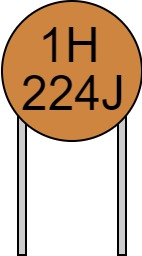
- 1st digit:2
- 2nd digit:2
- Multiplier:$10^4$
- Tolerance:±5[%](J)
- Rated Voltage:50[V](1H)
- Capacitance Value:$$22 \times 10^4[pF]=220000[pF]=0.22[uF]±5[\%]$$
Capacitance value, tolerance, and rated voltage are marked.
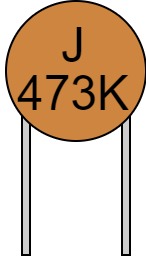
- 1st digit:4
- 2nd digit:7
- Multiplier:$10^3$
- Tolerance:±10[%](K)
- Rated Voltage:63[V](J)
- Capacitance Value:$$47 \times 10^3[pF]=22000[pF]=0.047[uF]±10[\%]$$
The "1J" in the rated voltage marking is abbreviated to "J". Please be careful not to mistake this for "j", which is marked with a single letter of the alphabet only.
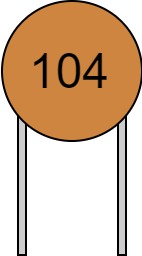
- 1st digit:1
- 2nd digit:0
- Multiplier:$10^4$
- Capacitance Value:$$10 \times 10^4[pF]=100000[pF]=0.1[uF]$$
Depending on the type of capacitor, the tolerance and rated voltage may be omitted.
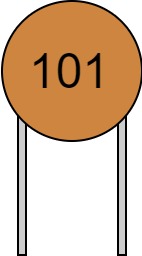
- 1st digit:1
- 2nd digit:0
- Multiplier:$10^1$
- Capacitance Value:$$10 \times 10^1[pF]=100[pF]$$
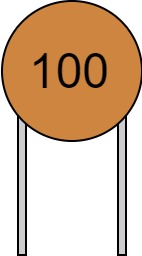
- 1st digit:1
- 2nd digit:0
- Multiplier:$10^0$
- Capacitance Value:$$10 \times 10^0[pF]=10[pF]$$

- Capacitance Value:$$100[pF]$$
If the capacitance value is less than 100[pF], read the marked number as it is.Note that in the case of 100[pF], there are two patterns of marking: "101" and "100".
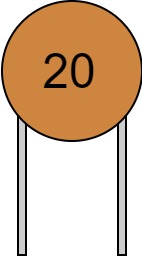
- Capacitance Value:$$20[pF]$$
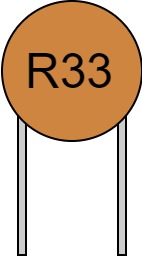
- Decimal Point:R
- 1st digit:3
- 2nd digit:3
- Capacitance Value:$$0.33[pF]$$
The "R" is marked as a decimal point.
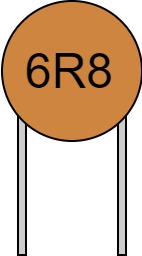
- 1st digit:6
- Decimal Point:R
- 2nd digit:8
- Capacitance Value:$$6.8[pF]$$
The "R" is marked as a decimal point.
Example:Electrolytic Capacitor

- Rated Voltage:50[V]
- Capacitance Value:$$100[uF]$$
Lead electrolytic capacitors are marked with the capacitance value and rated voltage as they are.
Since they are polarized, the longer lead wire is "+" and the capacitor body is marked with a white line so that the "-" can be recognized.
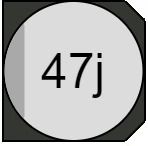
- Rated Voltage:6.3[V]
- Capacitance Value:$$47[uF]$$
Chip electrolytic capacitors sometimes omit the unit of capacitance value or indicate the rated voltage with a single letter of the alphabet only.
Also, the capacitor body is marked with a "-" to indicate the polarity.
No marking
Chip capacitors are without marking as shown below due to their small size.
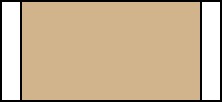
Once the model number of the chip capacitor is unknown, the only way to confirm it is to measure it with a capacitance meter or LCR meter.
Also, if the chip capacitors are examined up to their rated voltage, there is a possibility that too much voltage will be applied to them and destroy them.
Therefore, it may be better to discard chip capacitors whose model numbers are no longer known.